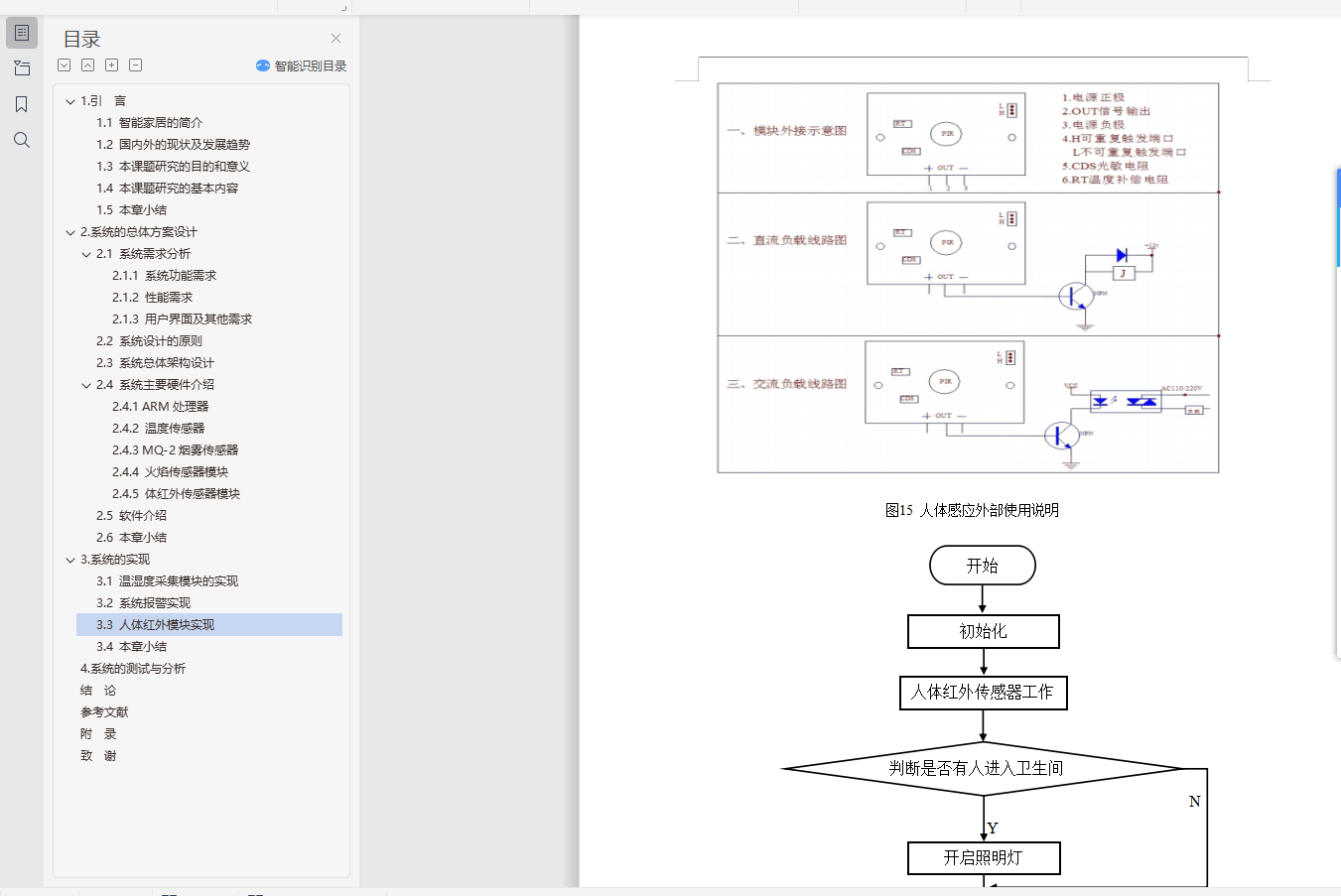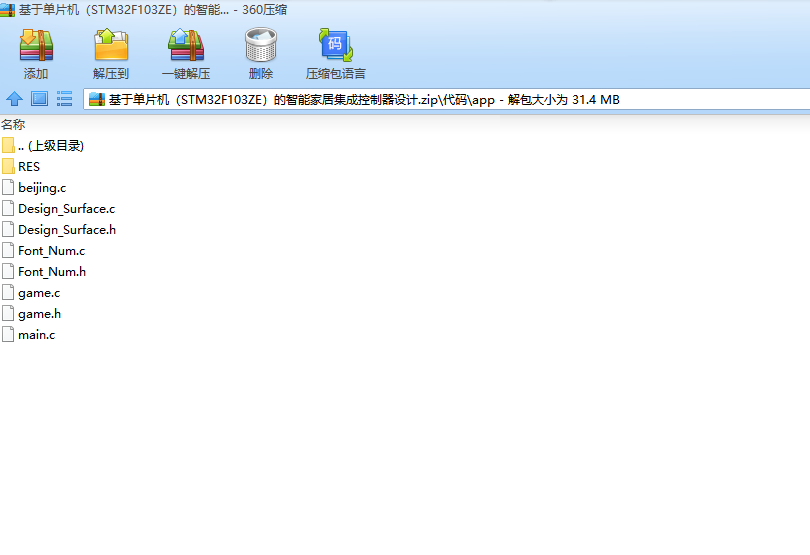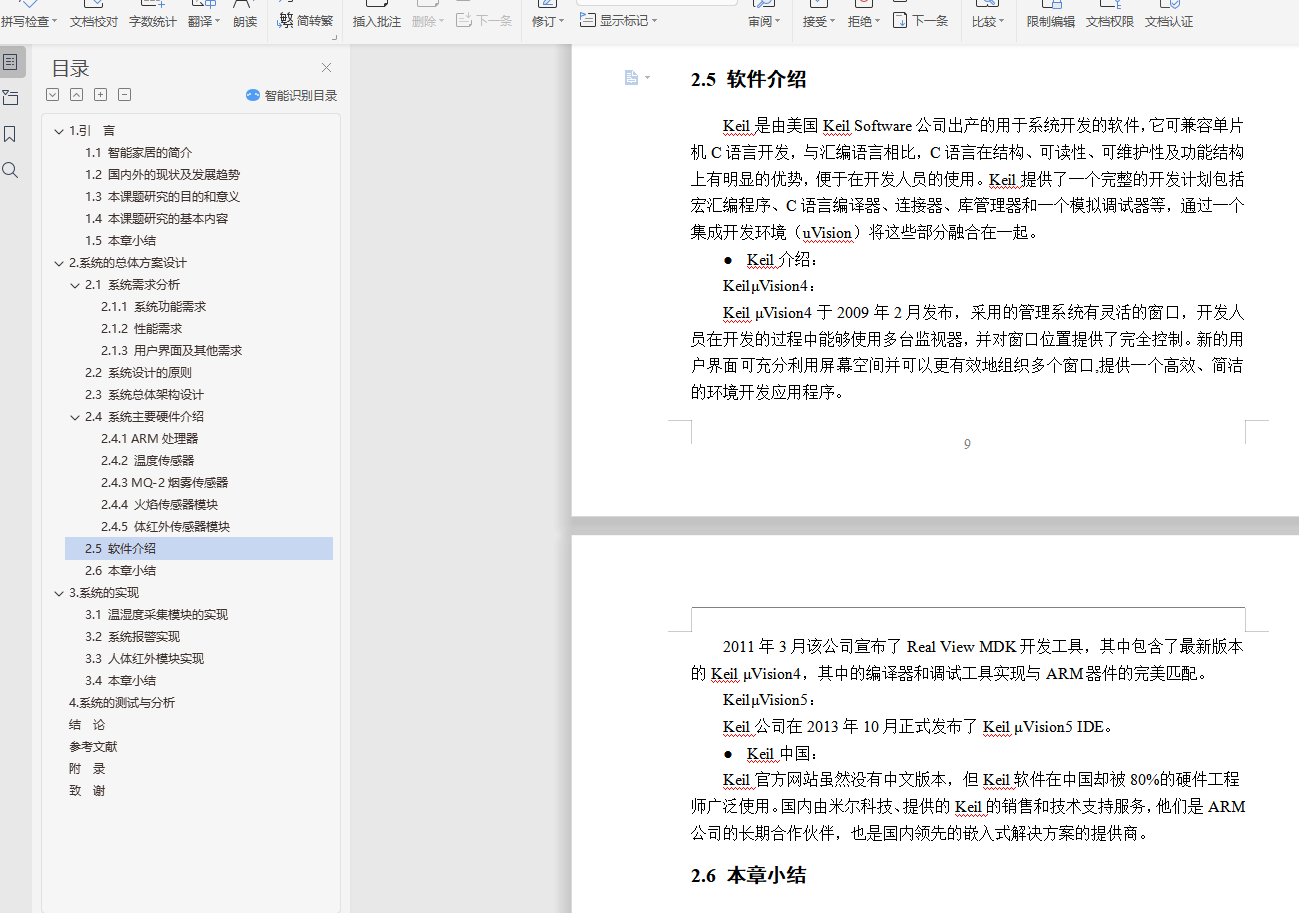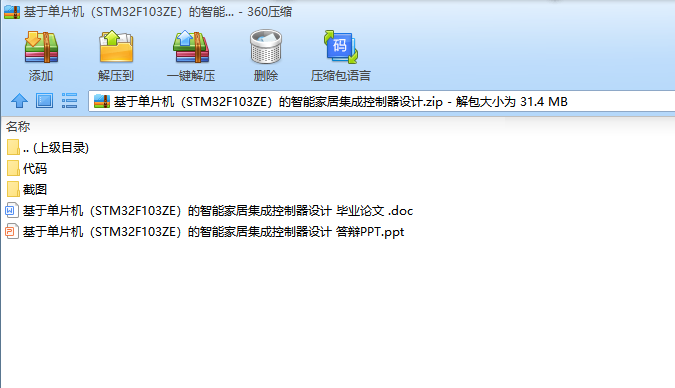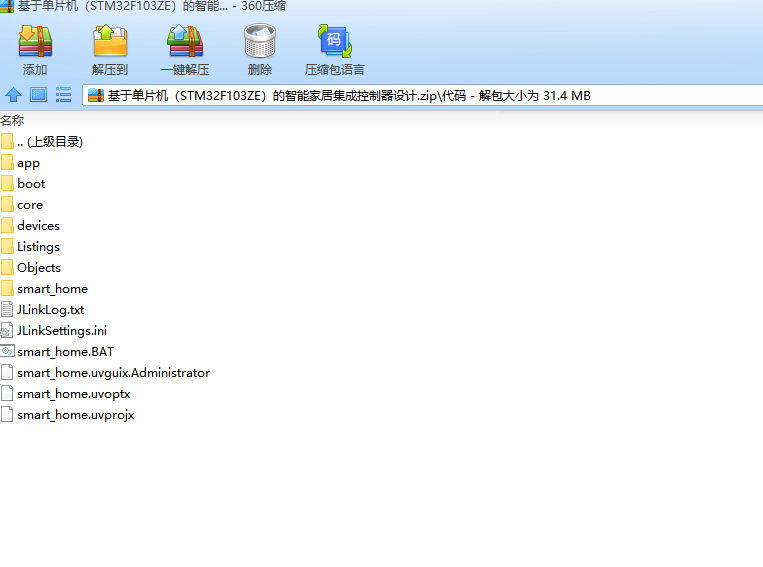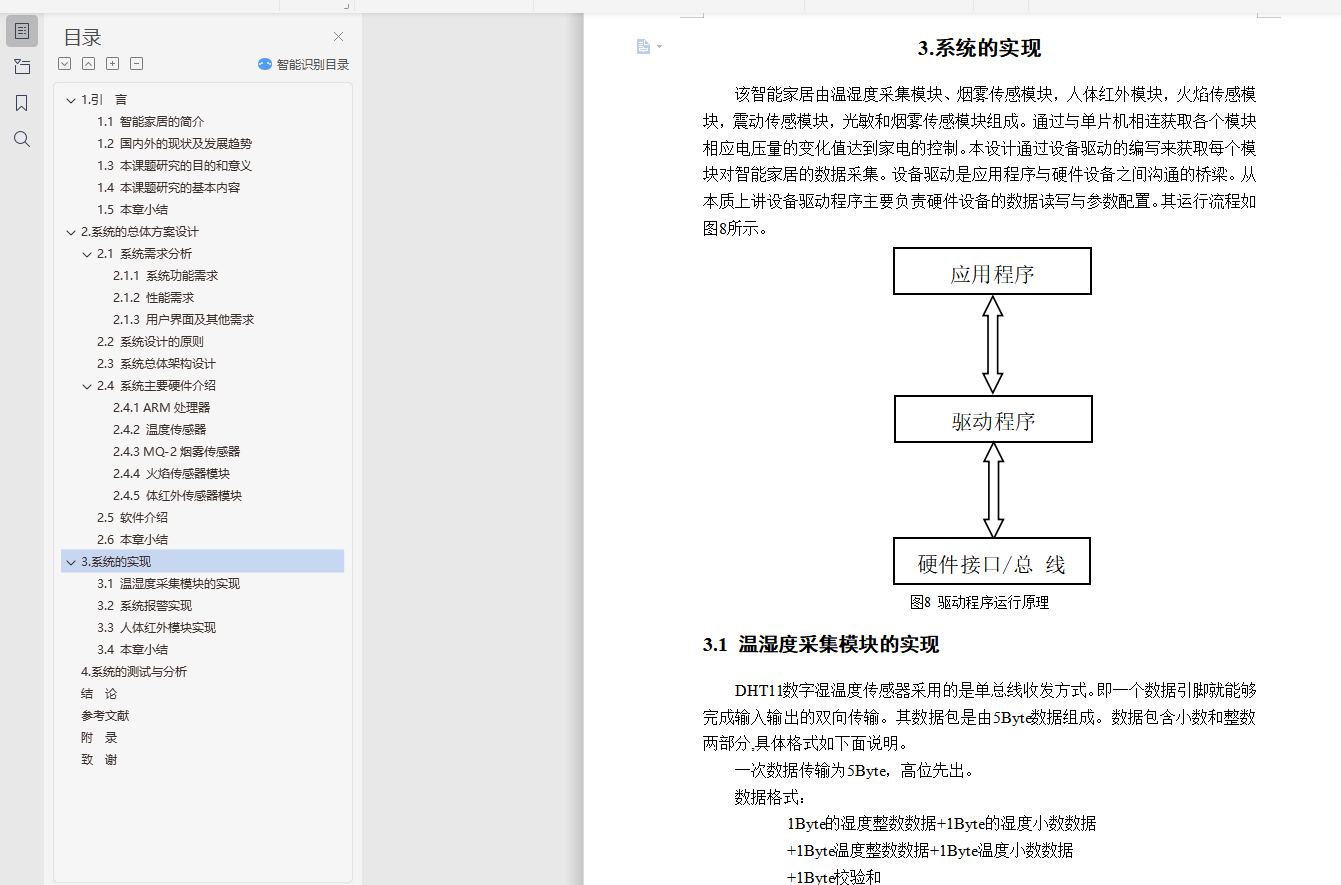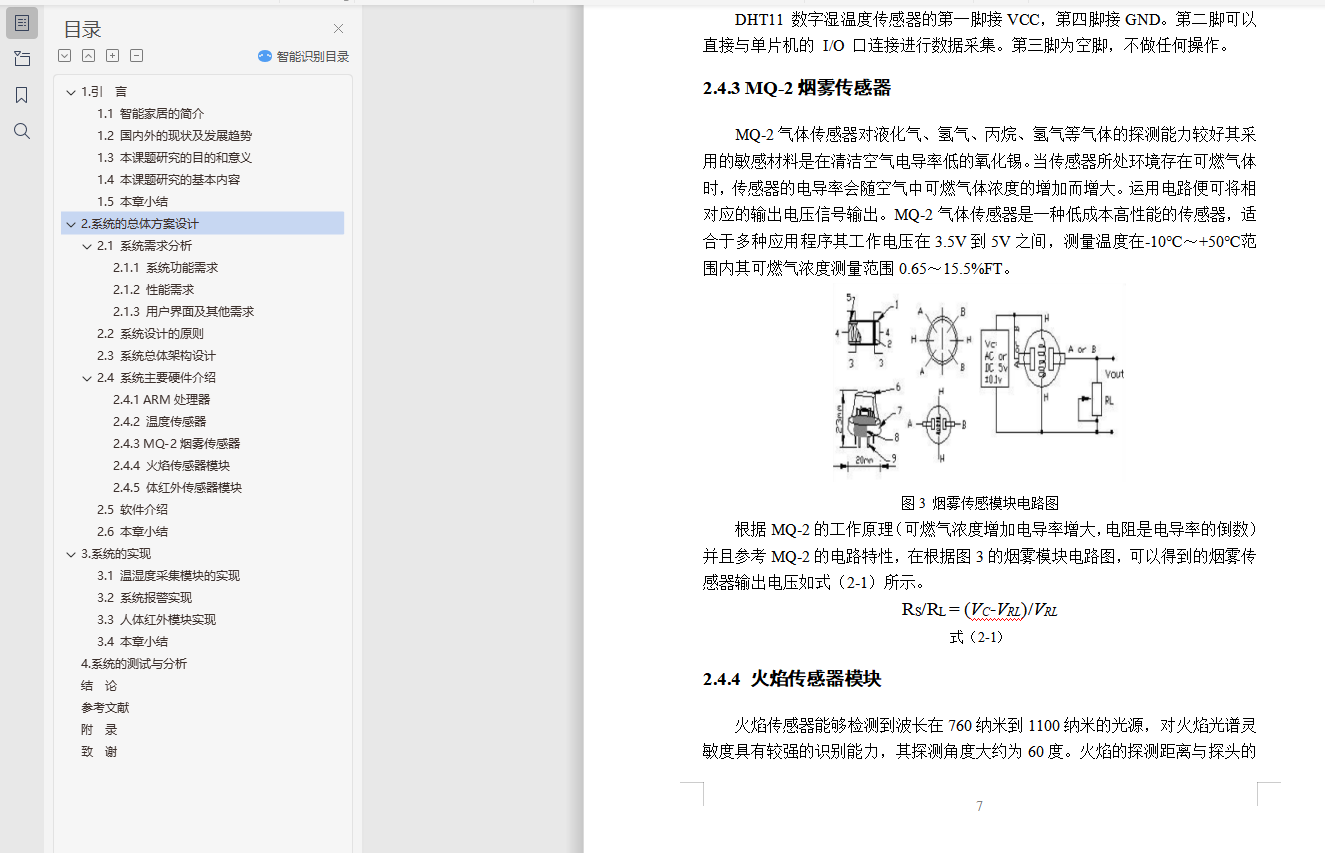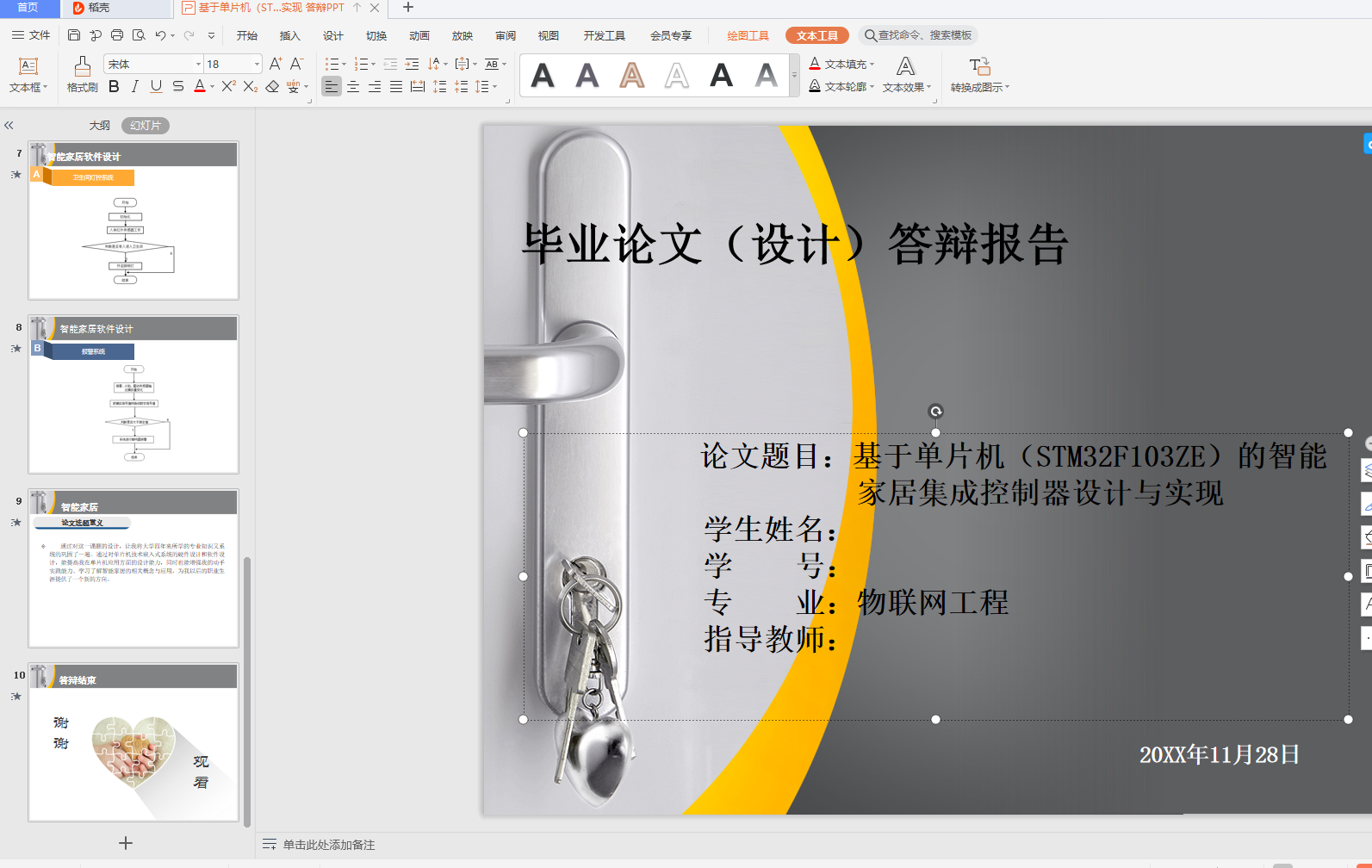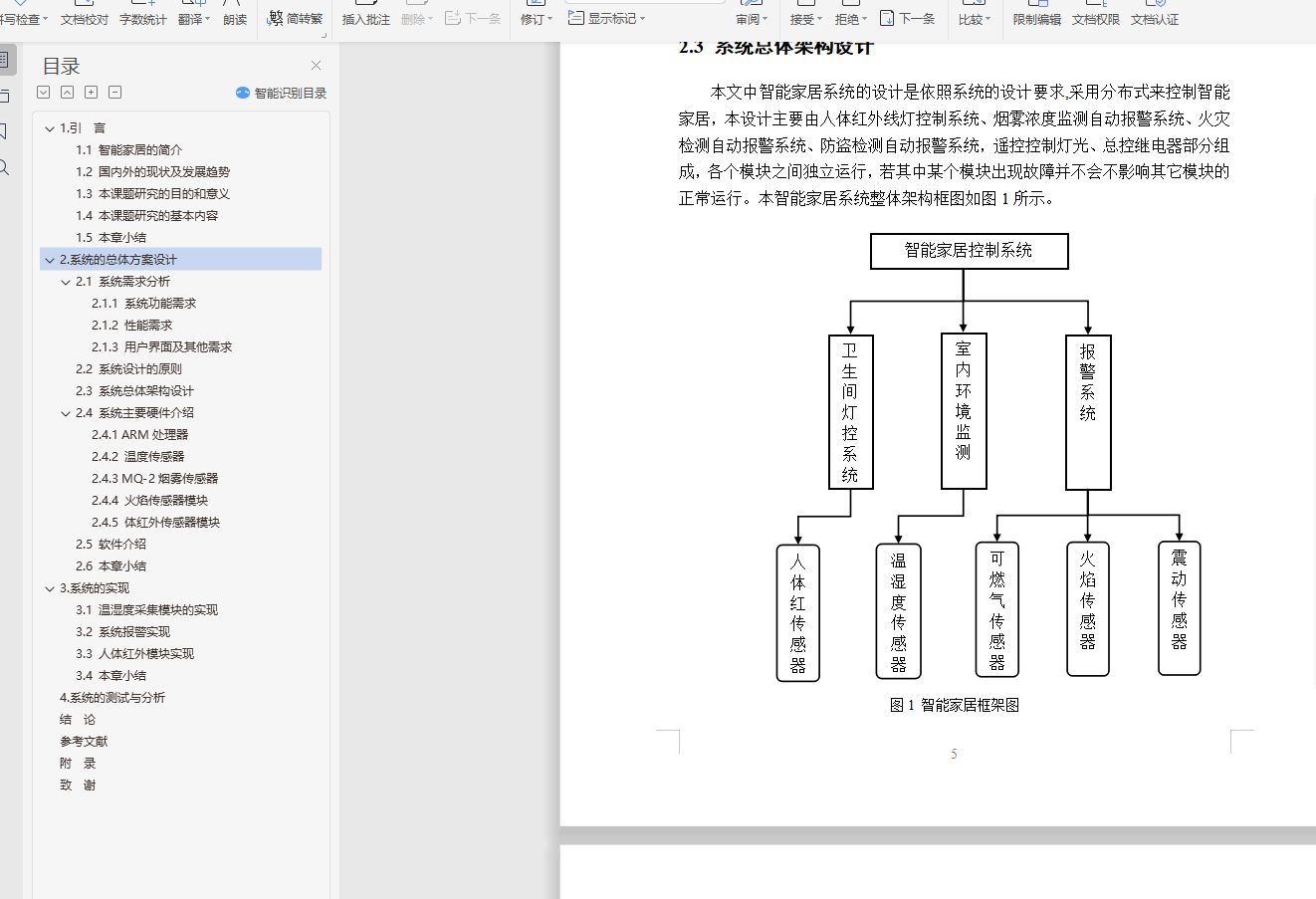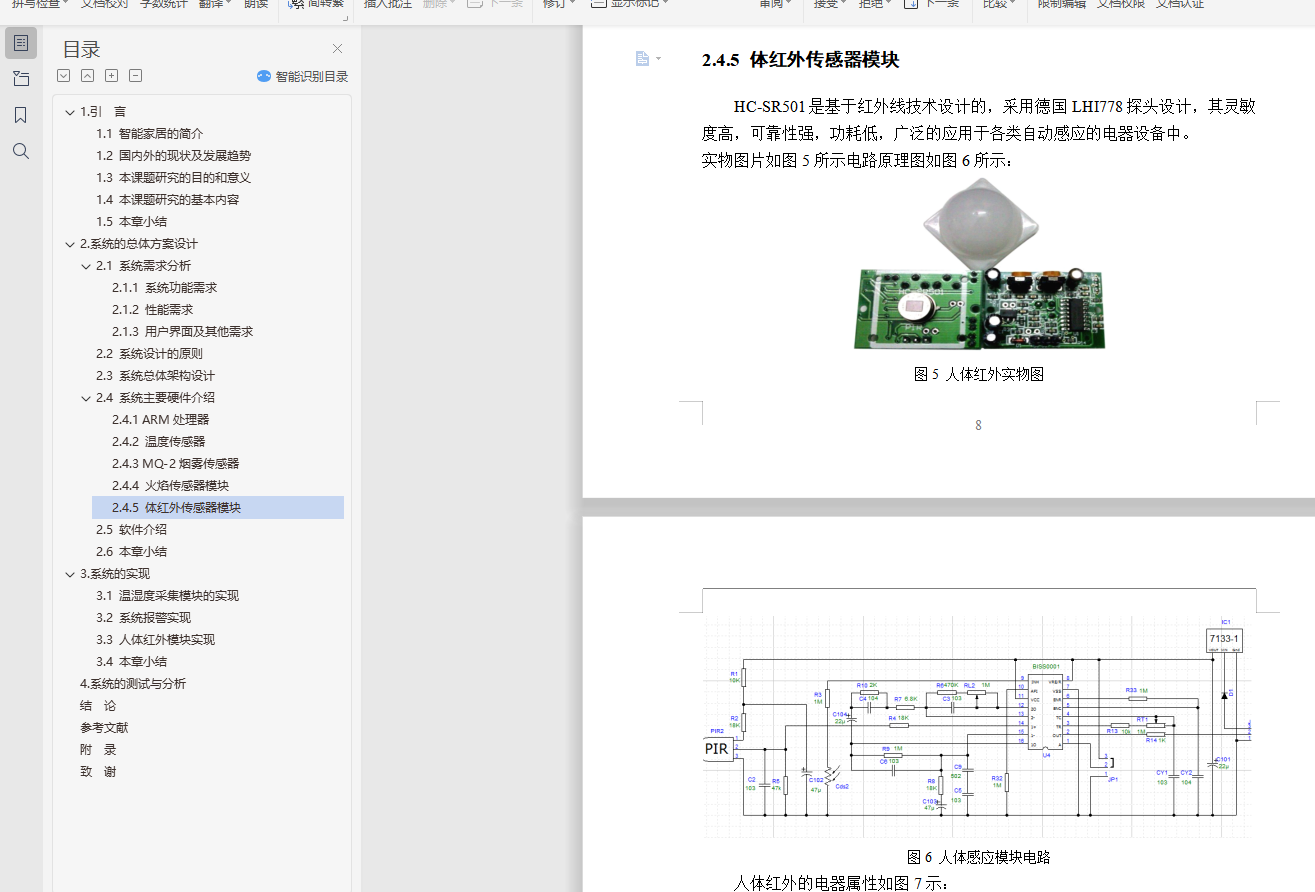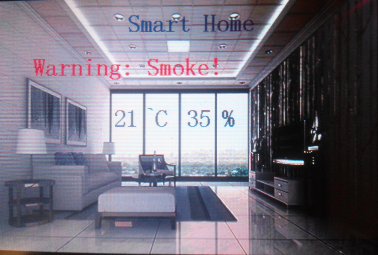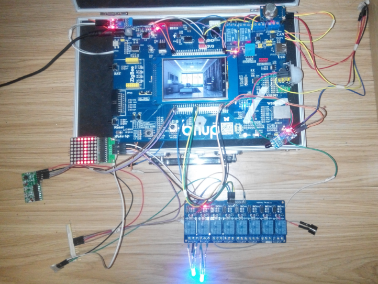基于单片机(STM32F103ZE)的智能家居集成控制器设计毕业论文+答辩PPT+代码
摘 要
物联网技术的兴起和发展逐渐的改变了我们的工作方式和生活方式。不仅需要办公变得智能,也需要家居生活逐渐变得智能化起来。智能家居就是在这样的影响下产生的。智能家居提供家电控制、照明控制、遥控控制、环境监测、防盗报警、人体红外扫描等多种功能和手段,帮助家庭实时了解家中情况,帮助人们有效的安排时间,更好地优化生活,增强生活的安全性,并且可节约能源及费用。
根据智能家居系统的特点和需要实现的功能,对智能家居控制的基本结构做出了详细的分析。最终利用人体红外传感器(infrared sensor), 温湿度传感器(temperature transmitter)、烟雾传感器(MQ-2)、火焰传感器、震动传感器、继电器等电路形成系统,达到对房屋的实时监控,以达到保护人员、物体的安全,方便用户随时了解并掌握房屋情况。
关键词: 物联网;智能家居;传感器
Abstract
The rise and development of networking technology gradually changed the way we work and live. Not only need to work to become intelligent, but also need to gradually become intelligent home life together. Smart Home is in such the impact. Smart Home provides a variety of functions and means to control home appliances, lighting control, remote control, environmental monitoring, burglar alarm, infrared body scan to help families understand the home real-time situation, arrange a time to help people effectively, to better improve the living and enhance life security, and can save energy and costs.
According to the characteristics and the need to achieve the functionality of the smart home system, the basic architecture of the intelligent home control to make a detailed analysis. End-use human infrared sensor (infrared sensor), temperature sensors (temperature transmitter),smoke sensor (MQ-2), relays and other circuit-forming system to achieve real-time monitoring of the house, in order to protect personnel, security objects, easy for users to understand and master houses situation.
Key words: Internet of things; Smart home; the sensor
目 录
